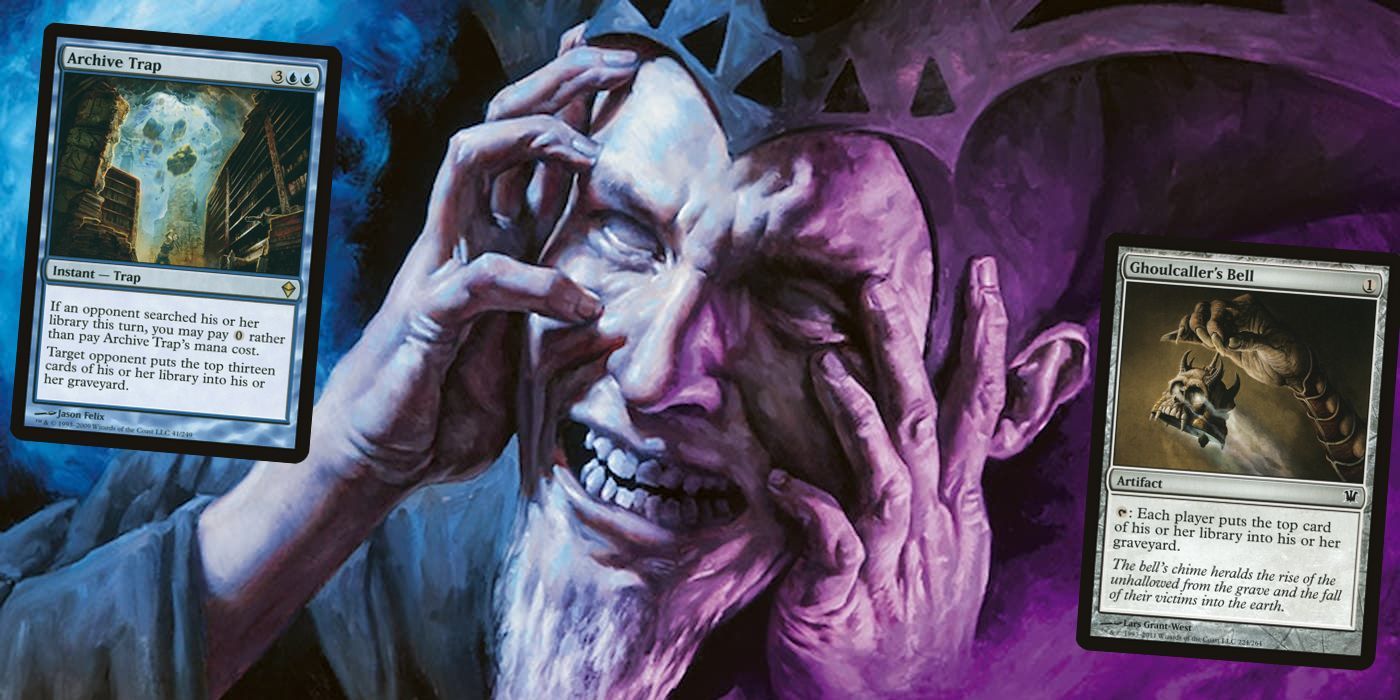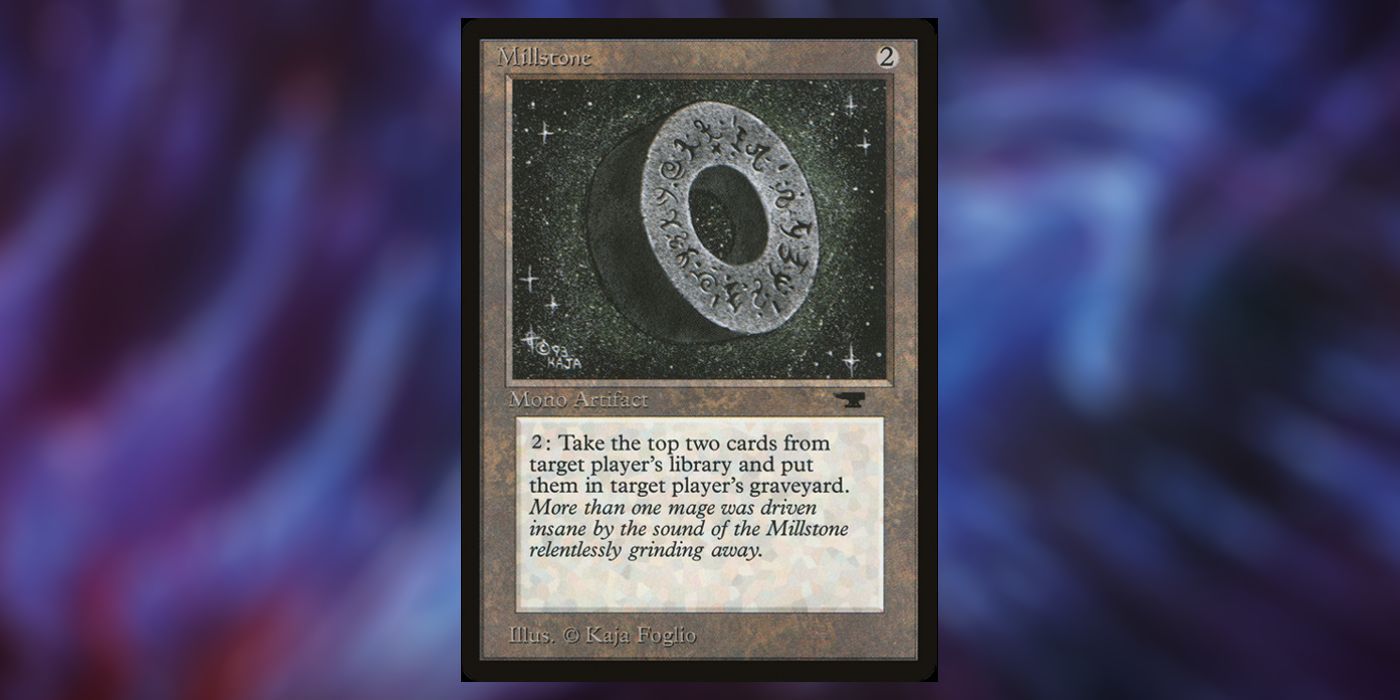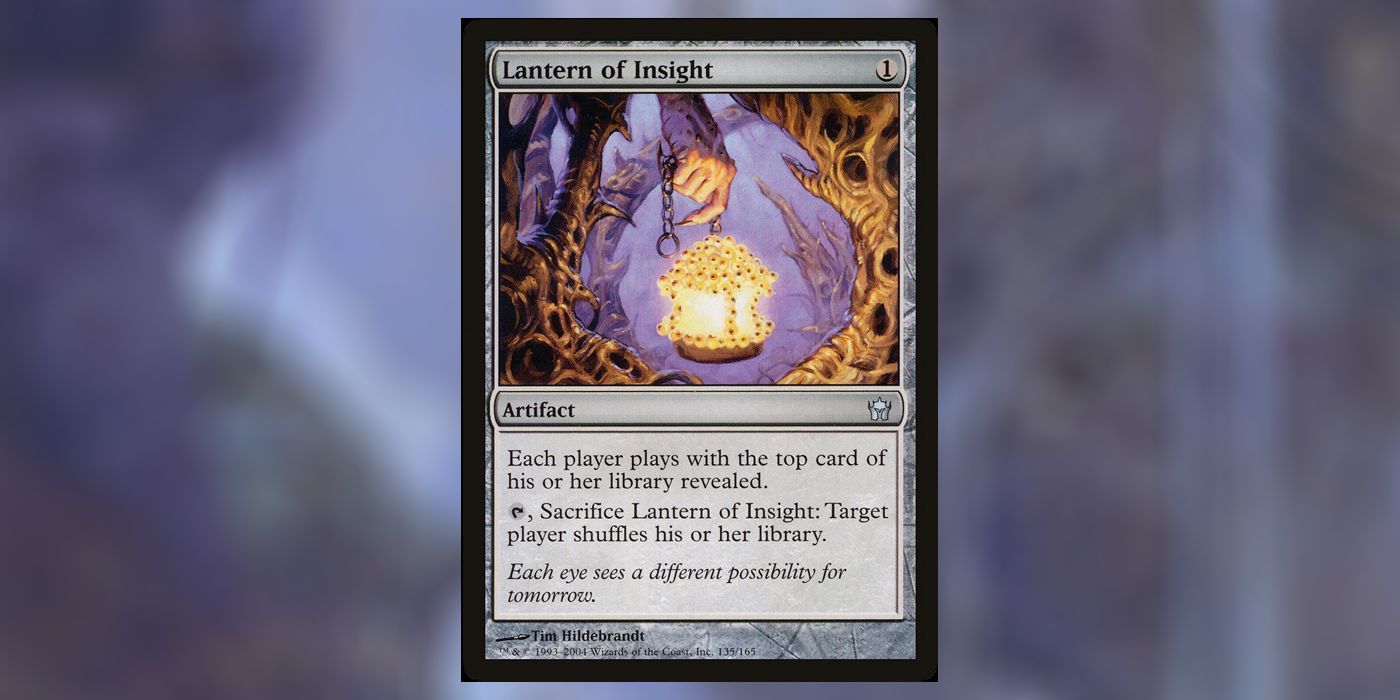Summary
- Mill is a strategy in Magic: The Gathering that involves putting cards from a player's library into their graveyard. Some players hate it because it messes with their cards, while others find it fun and unique.
- Mill decks typically win by "milling out" opponents, causing them to lose the game when they can no longer draw from an empty library. It is mostly a casual strategy and can be difficult to execute in constructed formats.
- Being milled can be frustrating for players because they feel like they are losing out on playable cards. However, more experienced players understand that the specific cards milled don't matter too much. The Lantern Control deck is one example of a particularly oppressive mill strategy.
If one thing is true of Magic: The Gathering, it's that the players can be very vocal if they don't like a particular deck or strategy. One strategy that gets a lot of negative attention is Mill. Whether it's Commander, kitchen table casual, or Modern, people don't like seeing their cards go into their graveyards. From the more innocuous mill decks like UB Mill to the titan of obnoxious milling Lantern Control, decks that mill opponents' cards get under players' skin.
Why does Mill get people so up in arms? Why do some people love the deck? Is it really that bad? Sometimes, the boldest strategies have the biggest downsides, and some players regard an opponent's build that messes with their cards to be in bad form.
What is Mill?
Named after the card Millstone, an artifact that can be tapped for two mana to put two cards from the top of a library into the graveyard, Mill describes a deck archetype and a game action. In general, a player is milling when they are putting the top cards of their library, or their opponents, into the graveyard. Mill decks then take this and turn it into a game strategy. Some cards attempt to mill for value while others use mill as a win condition.
Mill decks generally win by "milling out" an opponent, as when any player draws from an empty library they lose the game. Mill has even become a keyworded game action after years of use in Magic player's lexicons, which helps with brevity and mill synergies. There are graveyard decks that mill their own library, but these are rarely described as "mill decks." There is also some disagreement about whether decks that mill their opponents for value, like UB Rogues, count as "true" mill decks.
Mill is almost always a casual strategy. An opponent in constructed has 60 cards, which means far more effort has to be put into milling them out. In addition, milling an opponent can often help some graveyard-based decks who might want their cards in their graveyards in the first place, or it may also help turn on the graveyard mechanics of their cards in play like Delirium. In draft or sealed is often difficult to get a critical mass of mill cards together. Usually, strategies like burn are much quicker to kill opponents. There are notable exceptions like the Dimir Mill deck in Modern which plays a semi-controlling game plan. In those cases, the decks often play plenty of graveyard hate so that their milling doesn't backfire.
Mill: Love it or Hate it
Mill is mostly a casual deck, but ironically the players that hate it the most are casual players. Commander players will often bemoan being milled more than being attacked. For many the experience of seeing their best cards go into the graveyard instead of into their hands is irksome. Part of the issue for these players is that while some decks can make use of their graveyards, for those that don't, the counterplay against Mill can be hard. Traditional aggro decks or burn decks can be often combated with incidental lifegain, but there are relatively few cards that hate on Mill as effectively. There are a few, like Endurance, but otherwise, it can be an axis of attack that few decks are prepared to deal with.
On the other hand, many players find Mill fun. Almost always, in nearly every format, some players try to make Mill work even if it's not necessarily competitively viable. Mill as a win condition is unique and playing with this strategy means that Mill players get access to cards that other decks don't really find useful. Cards like Throne of Eldraine's Drown in the Loch are powerful control options that are only available to decks that put a certain amount of their opponent's deck into their graveyard. Playing a Mill deck is an interesting experience for any Magic player who loves novelty, making it a perpetual Johnny archetype deck. Mill cards also have some of the most evocative and striking artwork in Magic the Gathering.
Is Being Milled Really So Painful?
Mark Rosewater did a GDC talk in which he talked about lessons learned through his experience as a Magic: The Gathering designer. One thing he notes is that players don't like seeing cards that they aren't able to play somehow, whether they discard those cards themselves or have them taken from them. This is most players' problem with Mill. They feel that the cards they are seeing go to their graveyards are cards they could have played. While it doesn't actually matter in terms of card advantage most of the time, getting milled just feels bad. More experienced players learn that it doesn't really matter too much which specific cards go into their graveyards from a Mill deck's spells, as they will have plenty of opportunity to draw other copies of the same card.
Compare this to discard-based strategies, which actively take cards away from a player's hand. Discard strategies are annoying to players because they make it harder to play out their strategies, which the player has often spent a lot of time crafting as they build their decks. Mill, however, seems to promote more of an unease and anxiety that they could have drawn what they ended up milling.
One deck, however, is as bad as the most diehard Mill hater will claim. Lantern Control was a modern deck that used a mill as a weapon and a win condition. By using Lantern of Insight, the deck could almost always give information on what was on top of both players' libraries. Then the Lantern player mills the top card of an opponent's library whenever they appear to be drawing anything relevant.
A Lantern player will make it so that their opponents draw lands and dead cards, using cards like Ensnaring Bridge to prevent creatures from being relevant and other lock pieces to prevent players from doing anything at all to stop their demise. Opposing a Lantern Control deck in the hands of a master is a uniquely demoralizing experience. Ever since the banning of Mox Opal and the introduction of Prismatic Ending, the deck has struggled to regain its footing, which some have taken as a very good thing.




